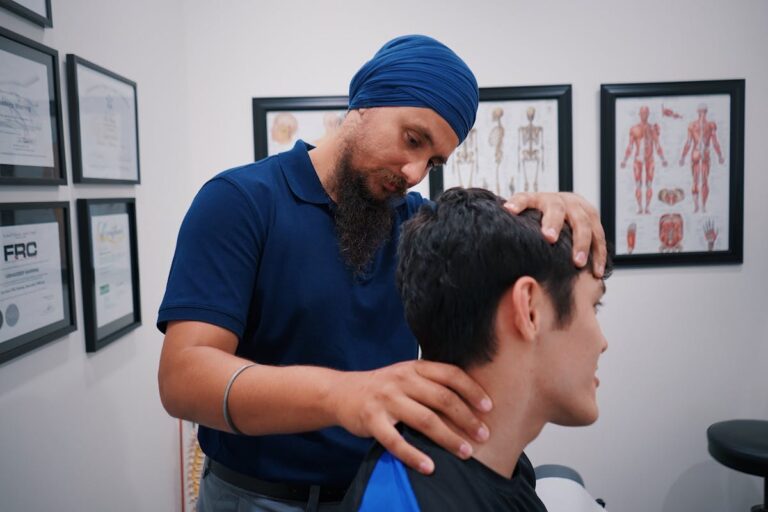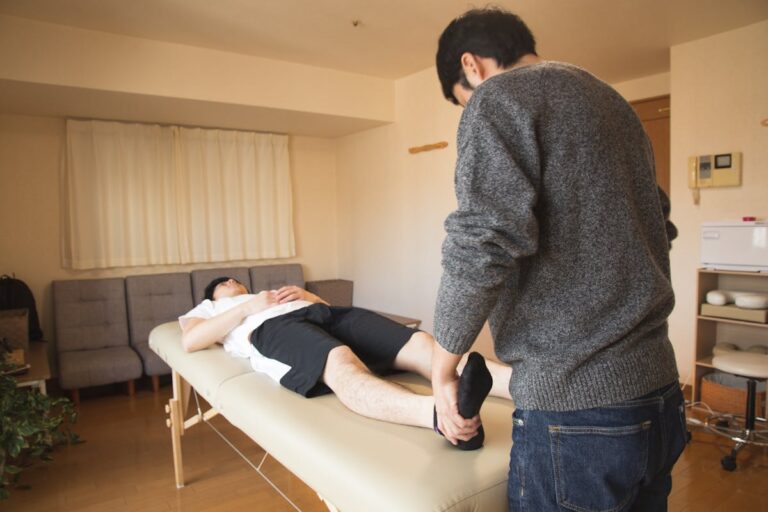Your Complete Guide to Chiropractic Adjustments, Sports Injury Rehabilitation, and Holistic Wellness Programs
This guide offers a thorough approach to health, integrating chiropractic adjustments, sports injury rehabilitation, and holistic wellness programs. It emphasizes spinal alignment’s essential role in ideal nervous system function. By employing evidence-based rehabilitation techniques and holistic practices, it addresses individual needs. It also highlights the importance of nutrition and mindfulness in promoting resilience and recovery. Readers are invited to explore how these elements collectively empower individuals to achieve their wellness goals effectively.
Understanding Chiropractic Care: Principles and Techniques
Understanding chiropractic care begins with recognizing its foundational principles and techniques, which focus on the relationship between the body’s structure—primarily the spine—and its function. Chiropractic philosophy emphasizes the body’s innate ability to heal itself, with spinal alignment playing a vital role in maintaining ideal health. Practitioners employ various adjustment techniques to correct misalignments, or subluxations, thereby enhancing neural function and promoting overall well-being.
These techniques are tailored to each patient’s unique needs, demonstrating a commitment to patient-focused care. By addressing the root cause of discomfort rather than just symptoms, chiropractors facilitate a holistic approach to health. Their expertise in spinal biomechanics guarantees precise, safe, and effective adjustments. Through this thorough understanding, individuals can achieve a balanced state of health, enhancing their quality of life.
The Science Behind Spinal Adjustments and Their Benefits
Spinal alignment techniques are foundational to chiropractic care, utilizing precise manual manipulations to address misalignments and promote ideal nervous system function. These adjustments are associated with a range of health benefits, including improved mobility, pain reduction, and enhanced overall well-being. By focusing on the body’s interconnected systems, chiropractic care supports a holistic approach to patient health and wellness.
Spinal Alignment Techniques
Revealing the potential of spinal alignment techniques, chiropractic adjustments offer a scientifically grounded approach to enhancing overall well-being. Central to this practice are spinal mobilization techniques, which involve gentle and precise movements to restore vertebral alignment. By targeting specific areas of misalignment, these techniques facilitate improved nervous system function and promote natural healing processes. Complementing these adjustments are postural correction exercises, which empower patients to maintain spinal health. These exercises focus on strengthening core muscles, enhancing flexibility, and correcting poor posture habits. Through a patient-focused and holistic approach, chiropractors tailor these interventions to individual needs, thereby addressing underlying spinal issues and contributing to improved physical function. Ultimately, these methods underscore the importance of spinal health in achieving long-term wellness.
Health Benefits Explored
While often associated with pain relief, spinal adjustments extend their benefits far beyond mere symptom alleviation, encompassing a multitude of health advantages. A benefits overview reveals that chiropractic care impacts overall wellness by enhancing nervous system function, thereby improving bodily coordination and resilience. By focusing on spinal health, these adjustments can alleviate stress on the central nervous system, which may lead to improved immune responses and energy levels. Furthermore, regular spinal care promotes joint mobility and flexibility, contributing to a holistic wellness impact on physical and mental health. Research supports the role of chiropractic adjustments in managing conditions such as migraines and chronic pain, underscoring their potential to foster a proactive health management strategy and elevate quality of life.
Exploring Sports Injury Rehabilitation Methods
In the domain of sports injury rehabilitation, an integrative approach that combines evidence-based recovery techniques with personalized rehabilitation plans is essential for ideal patient outcomes. By tailoring these plans to the individual needs of each athlete, practitioners can employ advanced therapy tools to address specific injuries and enhance the healing process. This all-encompassing strategy not only promotes efficient recovery but also supports long-term wellness and injury prevention.
Recovery Techniques Overview
Sports injury rehabilitation plays an essential role in the holistic recovery of athletes, combining technical expertise with a patient-focused approach to guarantee peak healing and performance restoration. Recovery methods encompass a range of techniques tailored to facilitate ideal healing, emphasizing injury prevention as a fundamental aspect. Techniques such as manual therapy, therapeutic exercises, and electrotherapy are employed to address specific injuries and enhance mobility. Additionally, sports-specific training and conditioning are integrated to rebuild strength and endurance, aligning with the athlete’s performance goals. The holistic approach guarantees a thorough recovery process, focusing on both physical and psychological aspects. By implementing these evidence-based recovery methods, athletes are better equipped to return to their sport with reduced risk of re-injury and improved long-term health outcomes.
Personalized Rehab Plans
Crafting personalized rehab plans is a critical component of sports injury rehabilitation, ensuring that each athlete receives a customized approach tailored to their specific needs and goals. These plans integrate a thorough assessment of the athlete’s condition, considering factors such as injury severity, fitness level, and personal rehab goals. A patient-focused strategy emphasizes adaptive exercises that evolve with the athlete’s progress, fostering recovery while minimizing the risk of re-injury. By adopting a holistic approach, practitioners can address not only the physical aspects of recovery but also the mental and emotional well-being of the athlete. This method enhances motivation, compliance, and overall outcomes. Tailored rehab plans are pivotal in restoring function and performance, ultimately enabling athletes to return to their sport safely and effectively.
Advanced Therapy Tools
While leveraging advanced therapy tools, practitioners in sports injury rehabilitation employ cutting-edge techniques and technologies to enhance recovery outcomes. Advanced diagnostic tools, such as musculoskeletal ultrasound and digital motion analysis, provide precise assessments of injuries, allowing for targeted interventions. These technologies guarantee accurate diagnosis, critical in formulating effective, individualized treatment plans. Additionally, innovative treatment modalities like shockwave therapy and laser therapy are utilized to accelerate tissue repair and reduce inflammation. Such modalities not only facilitate faster recovery but also minimize the need for invasive procedures. By integrating these advanced tools within a holistic framework, practitioners guarantee that patients receive thorough care. This approach focuses on restoring function, improving performance, and preventing future injuries, ultimately promoting long-term wellness and resilience.
Preventative Strategies for Athletes: Staying Injury-Free
Recognizing the physical demands placed on athletes, preventative strategies are crucial to maintain peak performance and reduce the risk of injury. A thorough approach to injury prevention includes incorporating dynamic warm ups that prepare muscles and joints for rigorous activity. Dynamic warm ups enhance flexibility, increase blood flow, and improve neuromuscular coordination, all of which are essential in minimizing injury risk. Athletes benefit from personalized conditioning programs tailored to their specific sport, focusing on strengthening key muscle groups and improving biomechanical efficiency. Regular assessments by healthcare professionals guarantee any emerging issues are addressed promptly. A holistic approach, integrating nutrition, proper rest, and mental well-being, complements these strategies, fostering resilience and longevity in athletic performance. Through these measures, athletes can stay robust and injury-free.
Integrating Holistic Wellness Practices Into Your Daily Routine
The integration of holistic wellness practices into daily routines serves as a natural extension of injury prevention strategies for athletes. By incorporating mindful breathing exercises, individuals can enhance their mental clarity and reduce stress, key components in maintaining physical health. Mindful breathing techniques, practiced consistently, improve oxygen flow and support muscle recovery, essential for athletic performance. Complementing this, engaging in daily movement routines guarantees sustained flexibility and strength. Structured activities, such as yoga or tai chi, promote balance and coordination, further mitigating injury risks. This holistic approach considers the interconnectedness of body and mind, emphasizing prevention and overall well-being. By integrating these practices, individuals foster resilience and longevity, aligning with personalized health goals and enhancing their quality of life.
The Role of Nutrition and Mindfulness in Holistic Health
A balanced diet and mindfulness practices are crucial components of holistic health, each playing a distinct yet interconnected role in overall well-being. Effective nutrition strategies involve consuming a diverse array of nutrients that support bodily functions and bolster immune defense mechanisms. Emphasizing whole foods, rich in vitamins and minerals, can mitigate inflammation and promote recovery, especially in conjunction with chiropractic care and rehabilitation. Concurrently, mindfulness practices, such as meditation and deep-breathing exercises, cultivate mental clarity and emotional stability, reducing stress and enhancing patient outcomes in holistic programs. Mindfulness fosters a heightened awareness of the body’s signals, aiding individuals in recognizing and responding to their physical and emotional needs. Together, these practices form a robust foundation for sustained health and well-being.
Personalizing Your Path to Wellness: Tailored Programs and Plans
In the pursuit of ideal health, personalizing wellness programs enables individuals to address their unique health needs effectively. Customized wellness programs focus on creating individualized plans that encompass a thorough evaluation of one’s physical, emotional, and lifestyle factors. By utilizing a tailored approach, healthcare providers can implement precise strategies that accommodate specific health goals and conditions. These bespoke plans often incorporate chiropractic adjustments, targeted exercises, and holistic therapies, ensuring a balanced and integrative approach to well-being. Through this patient-focused method, individuals benefit from interventions designed to enhance recovery, optimize performance, and prevent future ailments. By emphasizing a holistic approach, personalized wellness plans offer a path to sustainable health, empowering individuals to achieve their optimum wellness potential with precision and care.
Frequently Asked Questions
What Are the Potential Side Effects of Chiropractic Adjustments?
Chiropractic adjustments offer numerous benefits, including pain relief and improved mobility. However, potential side effects, though rare, can include soreness, headaches, or fatigue. It’s essential patients understand both chiropractic benefits and adjustment risks within a holistic approach.
How Often Should One Receive Chiropractic Adjustments for Optimal Results?
Determining adjustment frequency requires a personalized care approach. For best results, factors like individual health needs, lifestyle, and condition severity should be considered. A holistic approach guarantees adjustments align with patient-specific goals and overall well-being.
Can Chiropractic Care Help With Chronic Conditions Unrelated to Sports Injuries?
Chiropractic care can benefit chronic pain management through a holistic healing approach. By addressing musculoskeletal imbalances and promoting nervous system health, it supports overall well-being, even for chronic conditions unrelated to sports injuries, enhancing patient-centered outcomes.
Are There Alternative Therapies That Complement Chiropractic Adjustments?
Alternative therapies complementing chiropractic adjustments include acupuncture and massage therapy. Acupuncture benefits can enhance pain relief and healing, while massage therapy promotes relaxation and circulation, creating a holistic approach tailored to patient needs, maximizing therapeutic outcomes.
What Qualifications Should a Reputable Chiropractor Possess?
A reputable chiropractor should possess a Doctor of Chiropractic degree, complete extensive chiropractor education, and meet licensing requirements. This guarantees technical expertise, enabling a patient-focused, holistic approach to health and wellness, addressing diverse patient needs effectively.




